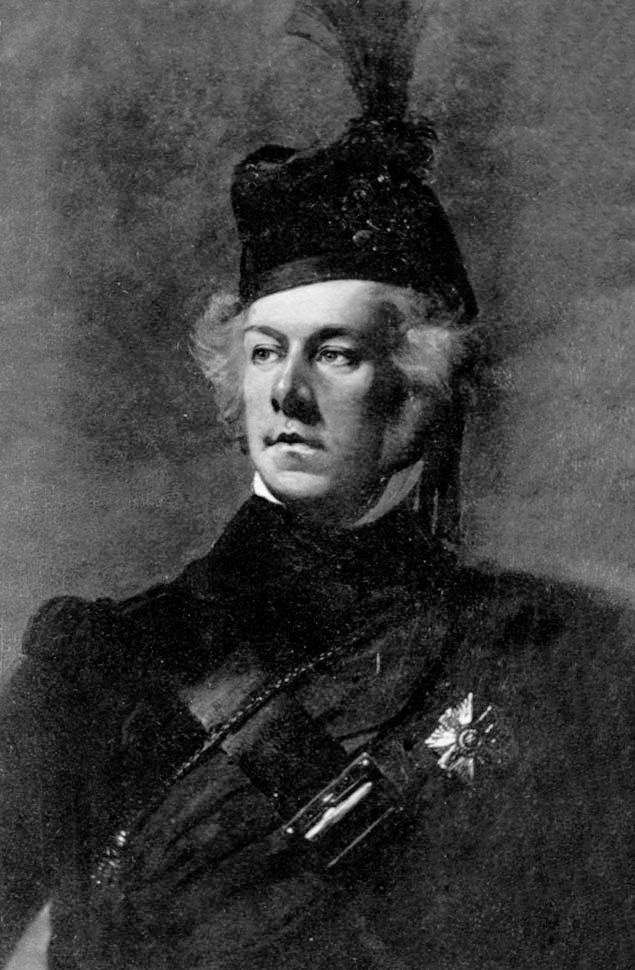Monarch Victoria Monarch Victoria | Preceded by The Earl Spencer Role Politician Prime Minister Lord John Russell Name John 2nd | |
 | ||
Prime Minister The Earl of AberdeenThe Viscount Palmerston Parents John Campbell, 1st Marquess of Breadalbane Great-grandparents Robert Campbell of Borland | ||
Succeeded by The Marquess of Exeter Grandparents Colin Campbell of Carwhin | ||
John Campbell, 2nd Marquess of Breadalbane KT, PC, FRS (26 October 1796 – 8 November 1862), styled Lord Glenorchy until 1831 and as Earl of Ormelie from 1831 to 1834, was a Scottish nobleman and Liberal politician.
Contents
Background and education
Born at Dundee, Angus, Breadalbane was the son of Lieutenant-General John Campbell, 1st Marquess of Breadalbane, and Mary, daughter of David Gavin. He was educated at Eton.
Political career
Breadalbane sat as Member of Parliament for Okehampton from 1820 to 1826 and for Perthshire from 1832 to 1834. The latter year he succeeded his father as second Marquess of Breadalbane and entered the House of Lords. In 1848 he was sworn of the Privy Council and appointed Lord Chamberlain of the Household by Lord John Russell, a post he held until the government fell in 1852. He held the same office under Lord Aberdeen between 1853 and 1855 and under Lord Palmerston between 1855 and 1858.
Other public appointments
A freemason, Breadalbane was Grand Master of the Grand Lodge of Scotland between 1824 and 1826. He was elected a Fellow of the Royal Society in 1834 and made a Knight of the Thistle in 1838. The following year he was appointed Lord Lieutenant of Argyllshire, a post he held until his death. In 1842 he entertained Queen Victoria and the Prince Consort at Taymouth Castle. He was a supporter of the Free Church of Scotland during the disruption in the 1840s.
Breadalbane was also Rector of the University of Glasgow between 1840 and 1842 and of Marischal College, Aberdeen, between 1843 and 1845, President of the Society of Antiquaries between 1844 and 1862 and Governor of the Bank of Scotland between 1861 and 1862. In 1861 he was sent on a special diplomatic mission to Berlin for the investiture of King William I in the Order of the Garter. He was appointed a Knight of the Order of the Black Eagle of Prussia at the same time.
Personal life
Lord Breadalbane married Lady Elizabeth ("Eliza"), daughter of George Baillie and sister of George Baillie-Hamilton, 10th Earl of Haddington, in 1821. They had no children. She was a Lady of the Bedchamber to Queen Victoria. She died in Mayfair, London, on 28 August 1861, aged 58. Lord Breadalbane survived her by just over a year and died at Lausanne, Switzerland, on 8 November 1862, aged 66. On his death the barony of Breadalbane, earldom of Ormelie and marquessate of Breadalbane became extinct. He was succeeded in the lordship of Glenorchy, viscountcy of Tay and Paintland and earldom of Breadalbane and Holland by his distant relative and namesake, John Campbell. The marquessate was revived in favour of the latter's son in 1885.
The University College London, Legacies of British Slave-ownership, two projects based at UCL tracing the impact of slave-ownership on the formation of modern Britain: (the ESRC-funded Legacies of British Slave-ownership project, now complete, and the ESRC and AHRC-funded Structure and significance of British Caribbean slave-ownership 1763-1833, running from 2013-2015), highlight that, John Campbell, 2nd Marquis of Breadalbane, benefited from the compensation paid out following the abolition of slavery in 1833. According to the record, he benefited from a payment of £6,630,5s,6d, an approximate £562,000 in 2015, made by the government of United Kingdom and Great Britain as recorded by the Slave Compensation Commission and the records held at the National Archives in London. The record containing the facts discovered can be found at https://www.ucl.ac.uk/lbs/person/view/19525, and the National Archive and the records of the Slave Compensation Commission.
